
by: SEO Strategist
Ashot Nanayan
Ashot Nanayan is the CEO and Founder of DWI and a seasoned SEO strategist. With a proven track record of...
All Articles by Ashot Nanayan
Updated August 9, 2025
15 min read
When I started my SEO career, working in-house full-time, I thought I had link-building figured out. The standard strategies: guest posts, outreach, paid placements, worked well for most industries. In fact, with enough budget, backlinks never seemed to be a problem.
Then, as a freelancer, I landed my first SaaS client. That’s when I realized something was off. The usual tricks that worked like a charm for eCommerce, local businesses, and blogs did not work for SaaS. Something was different. The audience was different. The competition was tough. Suddenly, money alone wasn’t enough to get results.
So, I did what any SEO obsessed with results would do; I dug in. I studied the differences, talked to industry friends, hired consultants, and tested new approaches. Today, I’m sure you’ll grab a few juicy pieces of advice to take your SaaS link-building game to the next level.
In this guide, I’ll share SaaS-specific tactics that work, the challenges you’ll face, and the common mistakes that could hold you back. If you’re serious about leveling up your SaaS link-building game, you’re in the right place. Let’s get into it.
Frankly, this is a common question, and whether you like it or not, the answer remains the same; yes, backlinks are still important for SaaS websites and virtually every industry, whether eCommerce, B2B, or a local store. However, personal opinions alone aren’t enough, which is why I decided to conduct research and gather relevant statistics on SaaS link-building.
Here we go:
82% of high-ranking SaaS websites have at least one backlink from a site with a domain authority (DA) of 70 or higher.
According to link-building statistics, over 75% of successful SaaS SEO campaigns include link-building as a primary growth lever.
71% of SaaS websites that achieve top 3 rankings on Google have over 500 referring domains pointing to their website.
SaaS websites with consistent link-building efforts see a 64% faster growth in organic traffic compared to those without any link-building strategy.
On average, SaaS websites with 1,000+ referring domains generate 6.3x more leads than those with fewer than 100 referring domains.
Over 90% of SaaS websites that rank on page 1 of Google have at least one backlink from a site with 50,000+ monthly organic visitors.
Backlinks account for nearly 55% of ranking factors for SaaS-related search queries with high commercial intent.
SaaS companies that invest in link-building see a 4.5x increase in organic sign-ups compared to those that rely solely on content marketing.
The average SaaS website that ranks in the top 3 positions has 35% more homepage backlinks than its competitors on page 2.
Over 78% of SaaS startups that fail to build a strong backlink profile struggle to break into Google’s top 10 results within their first 2 years.
92% of SaaS landing pages ranking in the top 5 positions have at least 10 dofollow links pointing to them.
SaaS companies with an average Ahrefs DR of 70+ generate 8.2x more organic traffic than those with a DR of 50 or below.
72% of SaaS companies that successfully outrank competitors in high-volume keywords have backlinks from at least 3 authority tech blogs.
SaaS brands that acquire editorial backlinks from tech publications experience a 40% faster growth in MRR (Monthly Recurring Revenue).
60% of SaaS founders believe that backlinks were the primary driver of their SEO success in the first two years.
More than 80% of SaaS review sites prioritize listing companies with strong backlink profiles, improving visibility and trustworthiness.
A single high-authority backlink (DR 80+) can increase a SaaS website’s organic traffic by 12-18% within 30-45 days.
SaaS companies with backlinks from competitor domains see an average organic traffic increase of 34% due to perceived authority and topical relevance.
Sites ranking for SaaS-related ‘best’ and ‘comparison’ keywords have an average of 210 referring domains, compared to just 65 for page 2 results.
Fundamentally, link-building follows the same principles across all industries: earning high-quality backlinks from authoritative and relevant sources. However, certain link-building techniques are more effective for SaaS than for other sectors, and acquiring backlinks for SaaS is more challenging than, say, for home improvement or lifestyle-related niches.
For example, in many industries, link acquisition is often very straightforward. You can reach out to bloggers or niche websites, offer a guest post, and even use AI-generated content to meet their publishing standards. Some sites accept paid placements, making the process even faster.
However, in the SaaS industry, websites have strict guest posting requirements, often accepting only industry experts or authoritative contributors. So, you can’t simply reach out to every SaaS company or blog and buy backlinks. In many cases, money isn’t a deciding factor.
Here is the comparison table showing the key differences between link-building for SaaS vs. other Industries across factors like cost, difficulty, link intent, best link types, and more:
| Factor | SaaS Link Building | Traditional Link Building | Key Differences |
|---|---|---|---|
| Cost | Generally more expensive due to the need for high-quality, niche-specific links. | Can be less expensive, with more flexible pricing options depending on the industry and link quality. | with more flexible pricing options depending on the industry and link quality. SaaS requires more targeted and high-quality links, increasing costs. |
| Difficulty | Highly competitive with limited opportunities due to niche focus. | Less competitive with more opportunities for link acquisition across various industries. | SaaS faces challenges due to its specialized nature and high competition. |
| Content Requirements | Requires highly technical and informative content to engage a knowledgeable audience. | Can involve a range of content types, from general to specialized. | SaaS content must be technically accurate and engaging. |
In this section, I’m going to talk about some pro tips and strategies for each link-building technique you might already be familiar with. Instead of discussing the same well-known tactics, I’ll help you understand some unique angles that might be particularly interesting for SaaS companies.
Most SaaS companies follow the same link-building playbook. So, if you’re tired of hearing the same advice, let’s break down some killer tips that work.
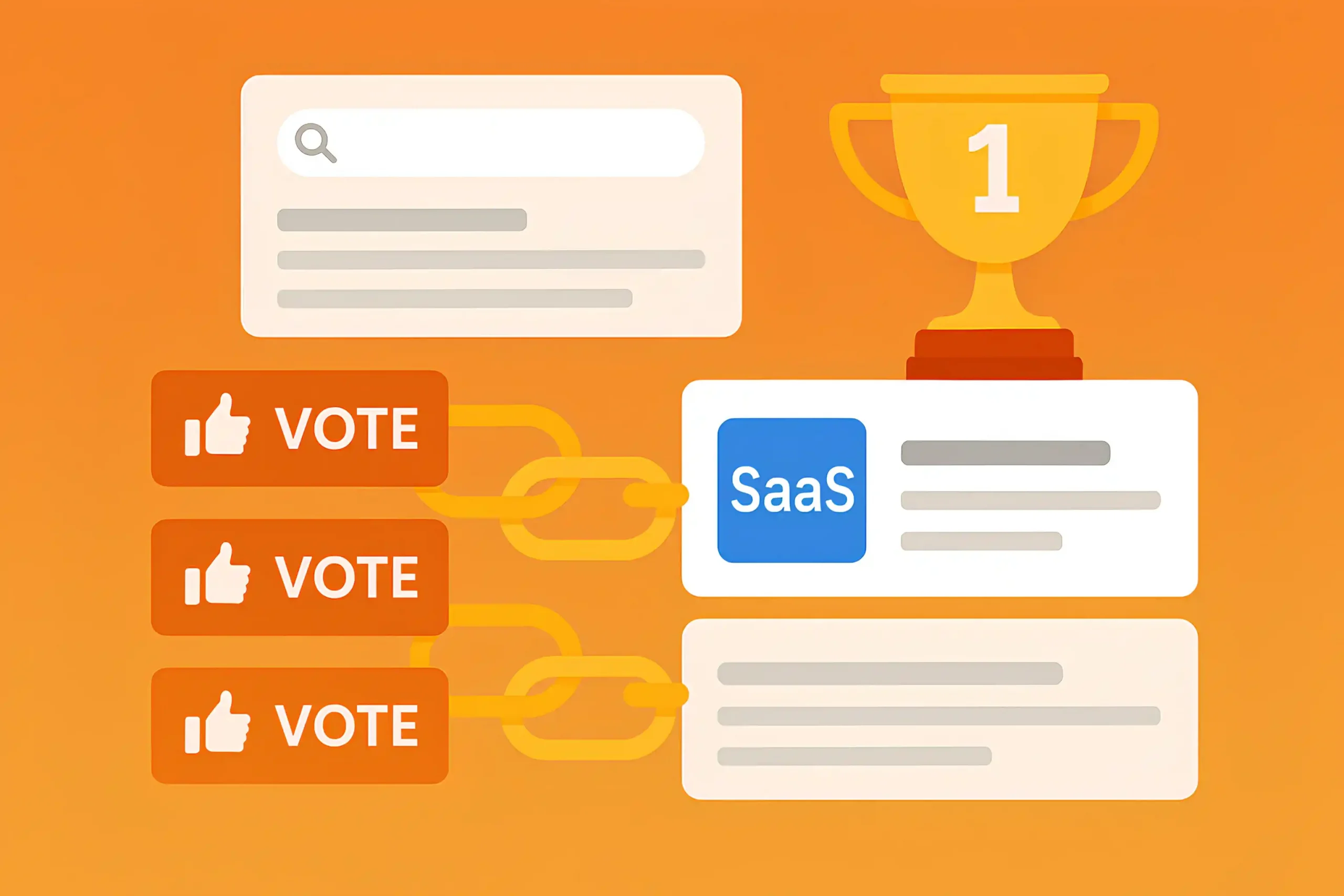
I’m not a huge fan of link exchanges in general. They come with risks, especially if you’re not deeply familiar with the industry, the nuances of backlink patterns, or how search engines evaluate link relationships. However, ABC link exchanges offer a much safer way to build links. It creates a triangular structure that makes the exchange look more natural and minimizes the risk of search engine penalties.
So, what exactly is ABC link exchange?
This way, there’s no obvious footprint of a direct exchange, making it much harder for Google to recognize it as a traditional link swap.
I would say link exchange is the number one link-building technique across SaaS. But, like every technique, ABC exchanges have their pros and cons. Let me highlight some of them.
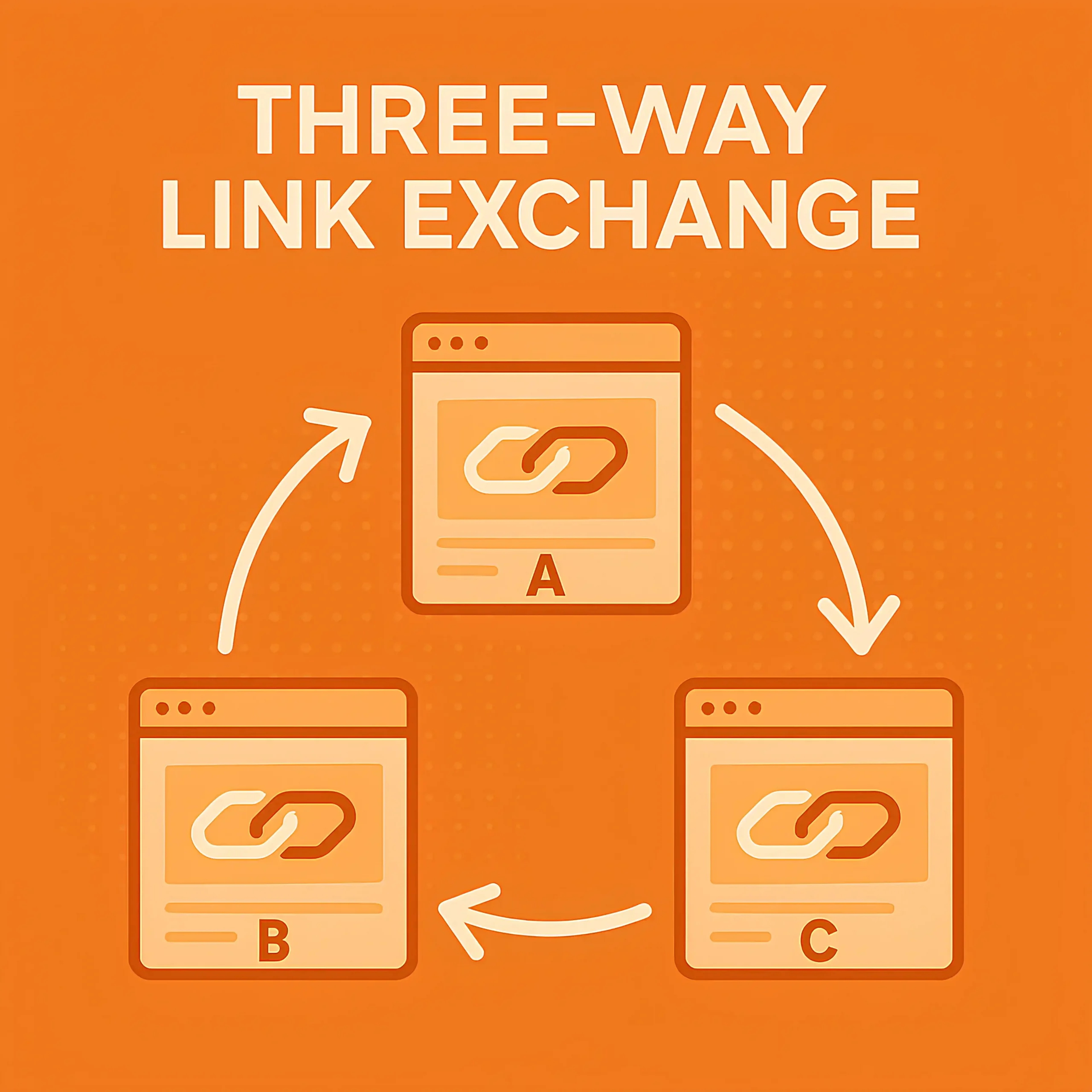
If you’re a link-building specialist or a website owner without prior experience in ABC exchanges, you’re going to struggle. Many don’t even know where to start. Reaching out blindly to sites and hoping they’ll agree to a swap does not always work.
The smarter choice is to entrust your link-building efforts to an experienced SaaS link-building agency. They already have the network, negotiation skills, and know-how to get quality exchanges that won’t put your site at risk.
Next, If you’re thinking about exchanging links with other SaaS companies, keep in mind that 90% of them have strict requirements. For example, they expect you to offer a strong website in return, meaning it has to have real value, not just a random blog with no authority.
Many SaaS companies will only do blog-to-blog exchanges, with highly natural anchor texts. That’s a good thing because if they’re this careful, there’s a very low chance they’ll get penalized by Google or see traffic drops in the future.
However, in this case, you can’t promote your homepage, service, or product pages.
Another important factor to consider is that most SaaS companies won’t even consider an ABC exchange unless your site has a high Domain Rating (DR) and some level of organic traffic. If your website is relatively new or lacks authority, you’ll be ignored.
I believe Digital PR and data-driven link-building campaigns should be at the top of your SaaS link-building strategy. However, not everything is worth a press mention, and the biggest mistake people make with Digital PR is assuming that simply having a product, feature, or update is enough to attract links.
One of the biggest blind spots in SaaS digital PR is the over-reliance on lead-generation campaigns while neglecting long-term brand awareness. A lot of SaaS founders and marketers misunderstand PR. They assume it’s about getting featured in a big publication and imagining sales flowing in without effort.
However, that’s not how it works. PR does not sell directly; it builds credibility, trust, and authority. It gets you in front of the right people. If your software has been featured in reputable industry publications, discussed on podcasts, or supported by influencers, your name carries more weight.
Here are the top Digital PR techniques to earn backlinks for SaaS.
One of my favorite ways to do this is through partnerships with niche podcast hosts. When you appear on a niche podcast that your ideal customers listen to, you’re engaging with them in a setting where they’re already paying attention.
If you want to learn more about Digital PR, check out our guide below.
A few years ago, you could submit a decent pitch, land a feature, and walk away with a backlink from a top-tier publication. However, ever since Connectively shut down, things have only gotten worse. Journalists receive hundreds of responses for every query, and if you’re in SaaS, the chances aren’t exactly in your favor.
At Digital World Institute (DWI), we offer HARO link-building services, and despite the tougher competition, I can confidently say there are still plenty of opportunities for SaaS companies.
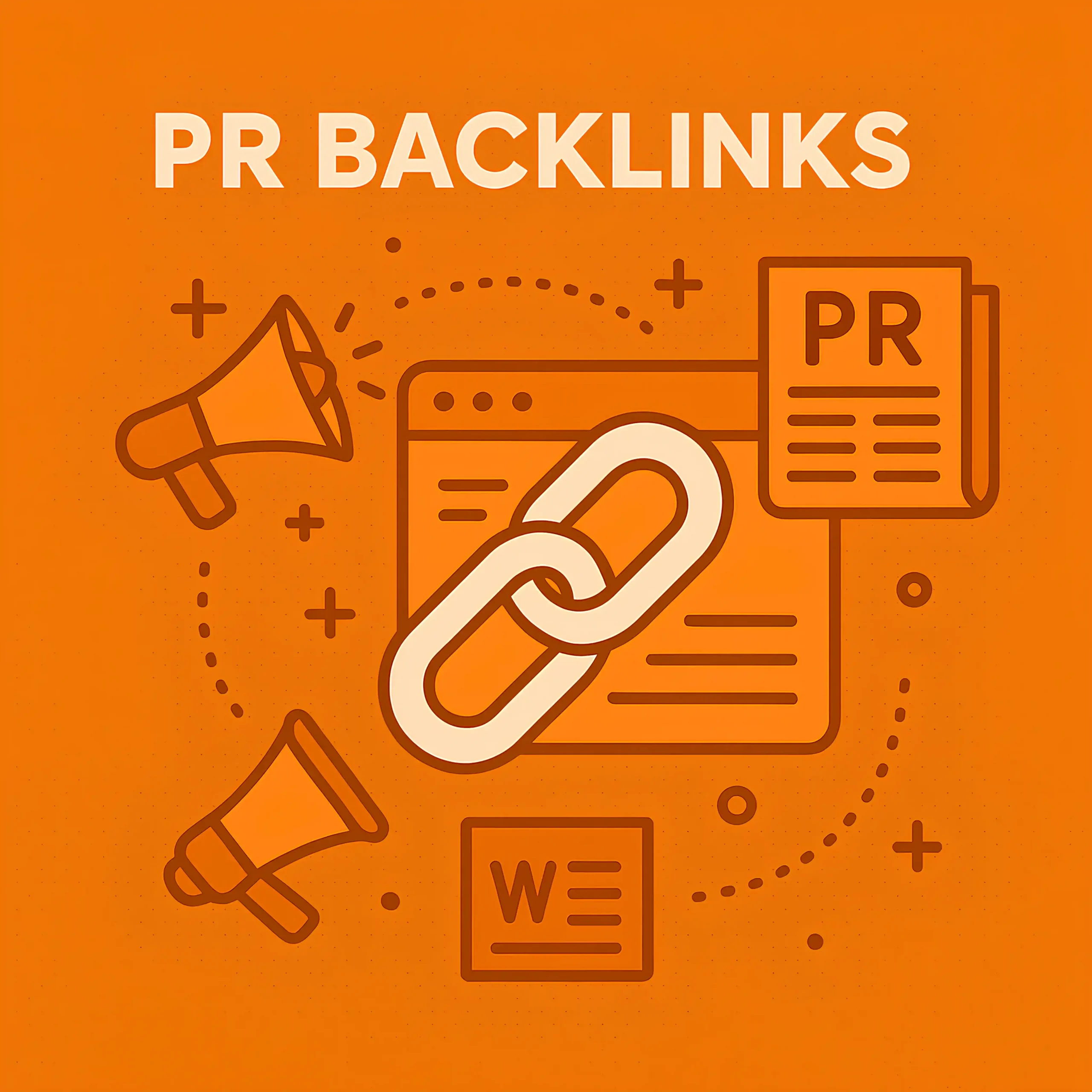
I’ve personally secured backlinks from some of the biggest media outlets by using my expertise in digital marketing and SEO. However, if you think you can rely on ChatGPT to generate pitches and expect results, I’ll save you the disappointment now: it’s not going to work.
But before you move forward, let me save you time: If you’re only here for dofollow links, this strategy isn’t for you. These platforms don’t typically guarantee backlinks, and it might take months to see results. Some mentions may even be nofollow. So, if you don’t have the time or patience for this approach, it’s best to look elsewhere.
Need some advanced tips? Let me share a few that even friends don’t usually share with each other.
First of all, always be very specific and super relevant. Only respond to queries that align with your SaaS niche and expertise. Use a professional tone, include actionable insights, and back your claims with data or experience. Journalists value well-researched, concise responses.
Use Micro-Niche Expertise: Even new SaaS sites can compete by focusing on ultra-specific queries. For example, target HARO requests about niche pain points (e.g., “SaaS onboarding workflows for healthcare apps”) rather than broad topics like “cloud computing”.
Prioritize Smaller Publications First: Build credibility by securing mentions in industry newsletters or mid-tier blogs before pitching to major outlets like Forbes.
Use Social Proof Proactively: Include a 1-2 sentence bio highlighting relevant experience (e.g., “We helped 50+ SaaS companies reduce drop-off rate”) to compensate for domain authority
Step 1: Use Boolean search operators in Gmail filters to target queries containing:
Step 2: Create a swipe file of successful pitches from competitors (e.g., analyze backlinks to HubSpot’s reports using Ahrefs).
Step 3: Structure responses using the PAS-T framework
Step 4. Set up Gmail filters to categorize HARO emails based on relevance. After every successful pitch, thank the journalist and offer further assistance.
I also connect with journalists on LinkedIn or Twitter, and, honestly, I’ve earned 2-3 backlinks just by reaching out to them on social media first.
Definitely, running an SEO agency isn’t easy, even if it’s small, and I couldn’t do everything alone. That’s why I hired a virtual assistant with HARO pitching experience to help me find the best opportunities and keep everything organized.
If you want to master HARO and turn journalist outreach into a great asset for your brand, check out my in-depth guide; it’ll show you exactly how to get featured on top-tier sites the right way.
Every SEO pro can easily differentiate most of the websites that offer guest posting opportunities from where you can insert your backlink in exchange for money. Yes, don’t get surprised; we’re SEO experts, and we know every single website that sells links.
Even if there is something new, we can easily distinguish such websites or blogs on any backlink profile by looking at the anchor text patterns or target pages.
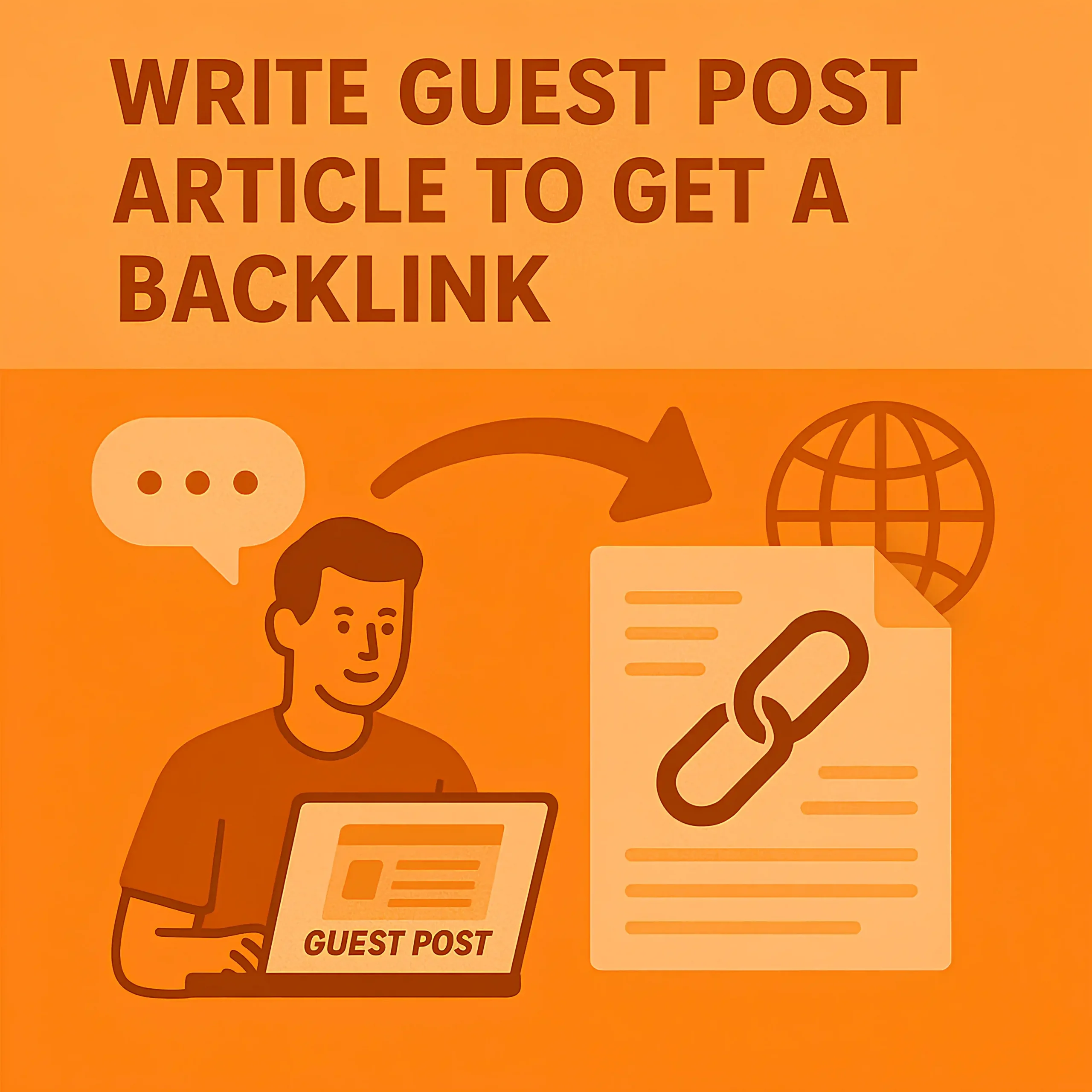
However, things are very different for SaaS companies. You cannot just write to any SaaS website or blog and ask them to accept your guest post. Most of them don’t even take any amount, or they will ask for a guest post article with very strict requirements.
Let’s say you manage to meet their criteria, you might wait two to three months to get your content published on a good SaaS website because there is a big queue.
Now, let’s talk about how things actually work in this space.
First, SaaS websites care a lot about their content quality, branding, and credibility. Unlike generic blogs that exist purely to make money from guest posts, SaaS websites are primarily focused on their own product and user experience.
That’s why your typical “How to Outsource SEO” article isn’t going to do the trick. You must provide specific tips, avoid AI content, or in some cases, even provide some infographics and custom images.
Start with Niche Micro-Publications: Target smaller SaaS blogs (10k-50k monthly traffic) with engaged audiences. These sites often accept contributions from newer brands if the content solves specific problems (e.g., “How SaaS Startups Can Optimize AWS Costs”).
Use Founder Authority: If your site is new but your team has experience, pitch bylines like “Former [Google/Meta] PM Shares SaaS Growth Frameworks” to bypass domain authority limitations.
Co-Author with Industry Voices: Partner with established SaaS influencers for collaborative posts. Example: “How We Scaled to $10M ARR: A CMO & Growth Hacker’s Playbook”.
On the other hand, the link-building outreach process itself is much tougher. If you’ve been sending out cold emails for guest posts in other industries, you probably expect at least a few responses, even if it’s just from low-quality sites.
But in SaaS, you’ll often hear nothing back, and if your email looks anything like the dozens of others they receive every week, it’s getting ignored.
If you want a real shot, you have to personalize your outreach, show that you understand their audience, and make it clear why your content is worth their time. And no, just saying “I love your blog” or “I’ve been a long-time reader” isn’t enough; they’ve heard that before.
Then there’s the approval process; yes, there’s a lot of manual link-building work involved here.
Let’s say you manage to get a SaaS blog interested in your guest post idea. This doesn’t mean they’ll publish your content next week. Unlike standard guest post sites that will take your money and publish whatever you send, SaaS companies have editorial teams that review submissions. They’ll go through your draft, request changes, fact-check claims, and make sure it meets their content standards.
If they feel the piece is too promotional, they won’t just remove your link, they might reject the entire post.
So yeah, the backlink management process is complicated here. Sometimes, even if your post gets accepted, they won’t allow a dofollow link back to your site. Some SaaS companies have strict policies against outbound dofollow links, and they won’t make an exception just because you contributed a guest post.
You need to be prepared for this and understand that in SaaS link-building, the real value isn’t just the link itself. It’s the authority you build by being featured on high-quality SaaS websites.
So, does guest posting on SaaS websites work? Yes, but only if you’re willing to put in the effort.
Approximately 40.7% of SaaS professionals recognize content marketing as the most effective strategy for passive link acquisition. I completely agree; in-depth content packed with unique insights and real expertise is a great weapon; almost like passive income for your site.
However, writing great content alone is not enough. You need to know when and where to incorporate it into your link-building strategy. For instance, if your website is brand new and has no authority, even if you create the best content in your industry, expecting it to naturally earn links is an illusion.
In one of my link-building case studies, I feature a detailed case study of a SaaS company that earned over 150 high-quality backlinks through the strategic use of linkable assets.
Let’s say you just launched your SaaS website: no authority, no established audience, no connections. You could write the most groundbreaking, research-backed article in your industry, but if no one sees it, how are they supposed to link to it?
If your website has zero authority your first goal shouldn’t be waiting for organic links. Instead, you should build links through techniques like HARO, digital PR, or ABC exchange. Once your website gains authority, your content will rank higher and attract links naturally.
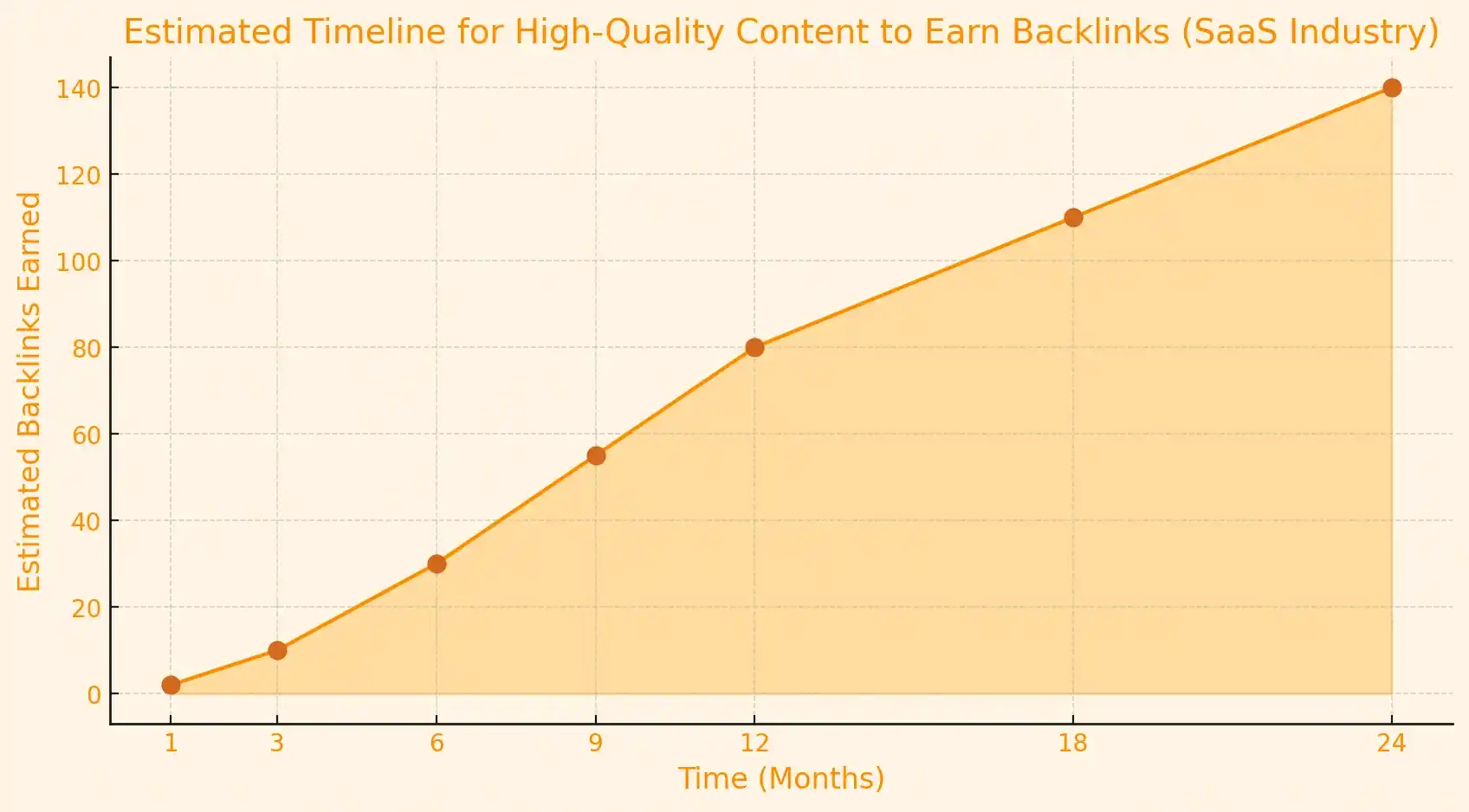
Now, let me share some advanced tactics to earn more backlinks through high-quality content for your SaaS website.
First things first. Analyze the top pages of your organic competitors that attract the most backlinks, excluding the homepage and service pages.
To do this, you can use Ahrefs:
Look at “Top Pages by Links” for Competitor Insights. Click on a competitor’s domain → Go to Best by Links (under Pages section).
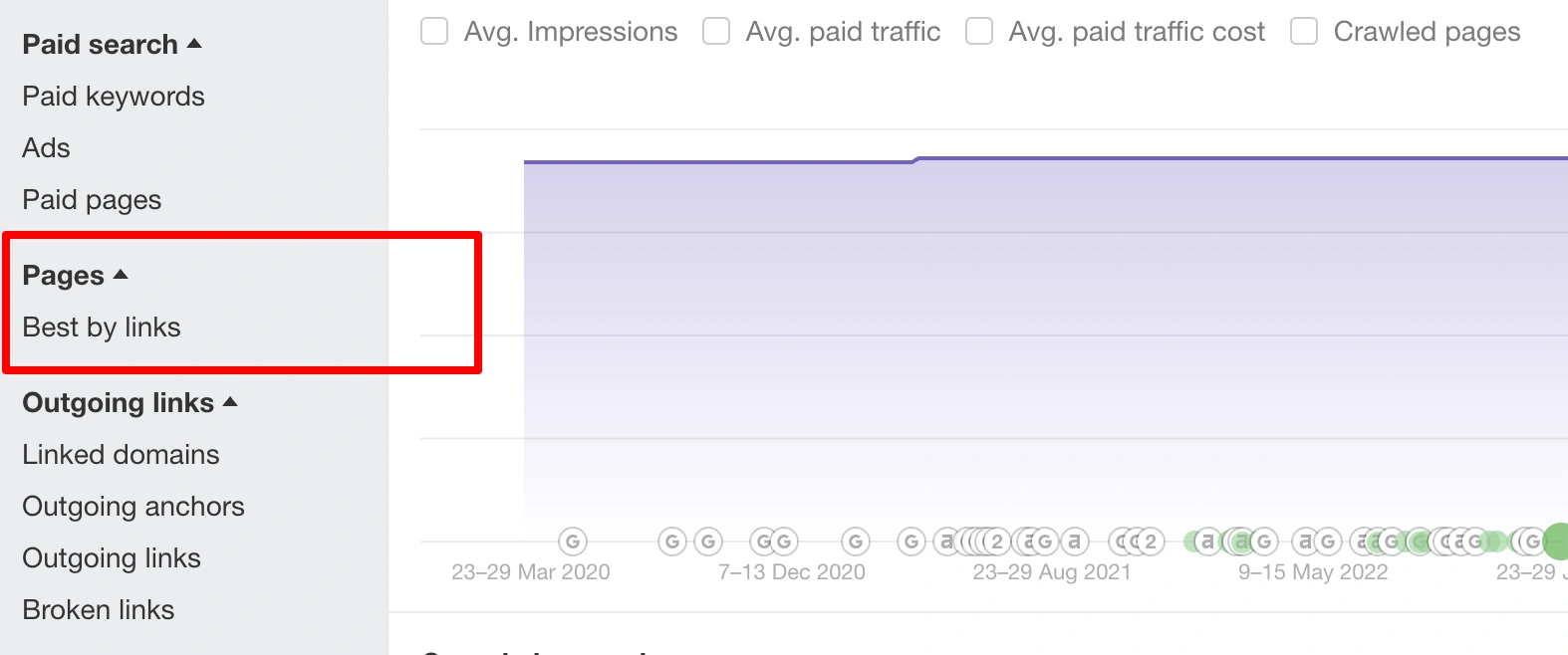
Next, identify which blog posts, case studies, or resource pages attract the most backlinks. Once you’ve identified the top linked pages, analyze why they’re earning backlinks
Here is a pro tip: Create 10x better versions of their most-linked content (e.g., turn a basic comparison guide into an interactive tool with real-time pricing data)
Especially, new SaaS sites should prioritize linkable assets requiring zero domain authority: free niche calculators, API documentation with developer tutorials, and Glossaries for emerging tech terms.
Here are some high-impact topics that attract links based on LinkedIn SaaS discussions and backlink analysis:
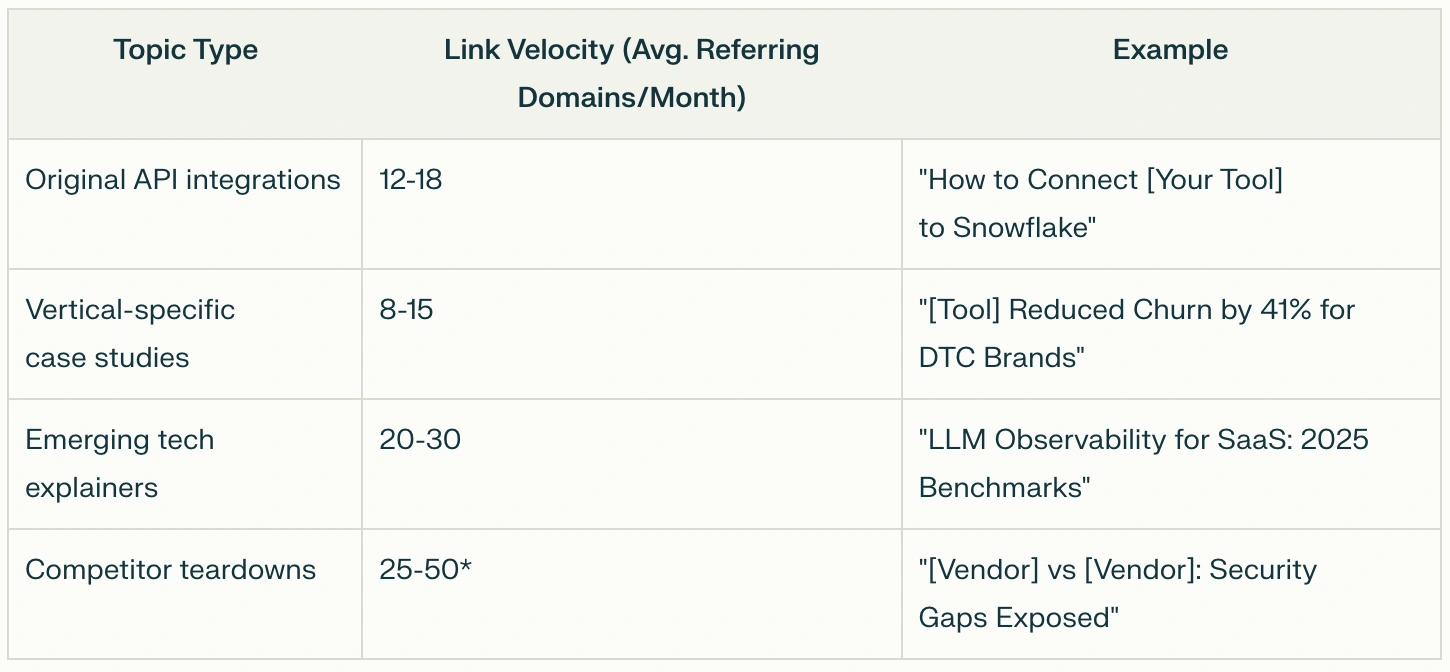
Advanced Tactics from Industry Experts
Link Triggers: Build content around upcoming compliance deadlines (GDPR, CCPA) with actionable checklists.
Atomic Research: Release monthly micro-studies (200-300 respondents) instead of annual “State of” reports
Community-Driven Content: Crowdsource data from SaaS subreddits/HackerNews threads for authenticity
I’m not reinventing the wheel; niche edits are one of the most commonly used link-building techniques across industries. However, the requirements are often much stricter compared to general niches.
In most cases, you cannot insert a commercial link to your service pages or homepage. Instead, you can create BOFU content, such as “Best Alternatives” or comparison articles on your blog, and then target similar pages through niche edits.
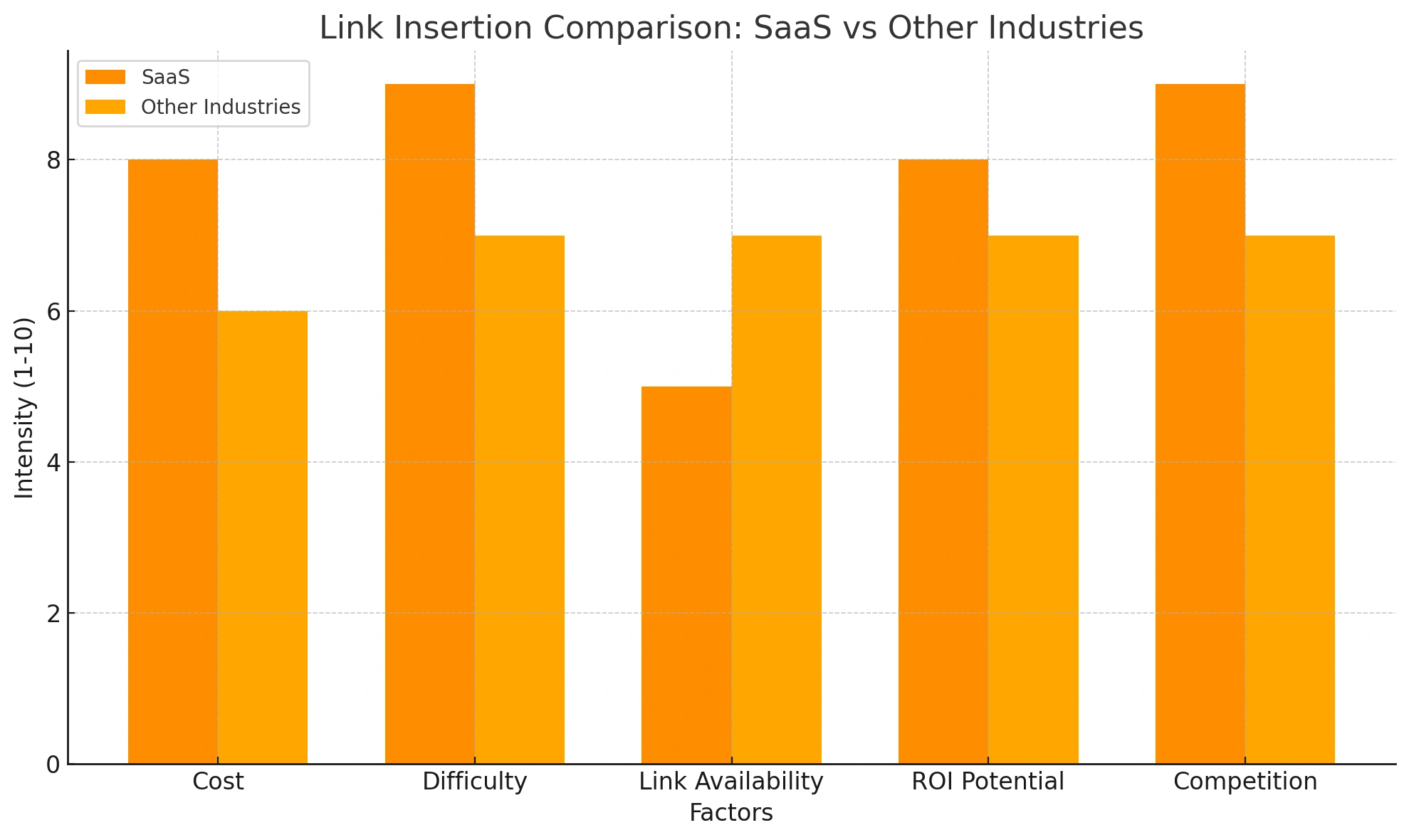
Most website owners, especially in competitive niches, won’t allow direct commercial links to service pages or homepages. That’s just how it is. These pages are transactional, and unless you own the website or have an extremely good relationship with the publisher, your chances of getting a service page link inserted into a well-established article are slim to none.
Even if someone does agree, the placement might be unnatural, making it obvious to Google that it was an unnatural edit.
Curious about niche edits? My guide breaks it down step by step. Don’t miss it!
There’s no way around it; quality backlinks cost money. Whether you’re a SaaS startup trying to break into your industry, a B2B SaaS competing for high-value customers, or an enterprise-level SaaS company looking to maintain authority, link-building is a necessary investment.
The cost of link building for SaaS varies based on many factors:
A contextual link from an established industry publication with quality organic traffic sometimes can range from $300 to over $1,500 per link, depending on the publication.
However, the pricing also depends on how the link is acquired. HARO links, for example, require more effort and patience but can bring in free or low-cost placements on high-authority sites.
Here are the top link-building techniques for SaaS ranked by cost:
I always share the same advice: throwing money at backlinks without a strategy is one of the fastest ways to waste your marketing budget. To set a realistic budget, you need to analyze your competitors’ backlinks. . Look at the backlink profiles of the top-ranking pages in your space. If they have hundreds or thousands of quality links, you’ll need a bigger budget to compete.
If they have strong, well-placed links but in moderate numbers, a targeted strategy can work with a smaller budget. You also have to factor in your overall growth objectives. If you’re aiming for slow, steady growth, investing in a handful of strong links per month might be enough. On the other hand, if you need to aggressively increase rankings in a competitive space, you’re looking at a much higher budget.
B2B SaaS startups: A minimum budget of $1,500 per month is recommended, especially if organic search is a primary growth channel.
Enterprise SaaS: Larger companies may invest significantly more, with some spending between $10,000 to $20,000 per month.
In my opinion, in most cases, it depends. However, if you’re only spending $1,000 per month on link-building, don’t expect a flood of high-quality links. You might get one or two decent placements, but nothing game-changing.
At $3,000 to $5,000 per month, you can expect around 10-12 strong links from authoritative sites, assuming your outreach and content are solid. At $10,000 per month, you’re looking at 25-30 high-quality links, possibly more if your strategy includes multiple acquisition methods.
If you’re spending $20,000 or more, you’re securing consistent high-authority placements, often in top-tier publications, which can move the needle fast.
One mistake SaaS companies make when budgeting for link-building is assuming the only cost is the link itself. What they don’t factor in are the hidden costs: content creation, outreach tools, PR software, link-building services, and even the time spent on relationship-building. Quality link-building requires well-researched, compelling content, whether it’s guest posts, HARO responses, or skyscraper-style content.
That means hiring SEO writers who understand your industry. Outreach isn’t free either. If you’re doing it in-house, you’ll need email automation tools, prospecting software, and databases that can easily add up to a few hundred dollars per month. If you’re targeting high-end placements, some of the best opportunities come through PR-driven strategies, which often require a separate investment in a PR agency or consultant.
Alright strap in, folks! We’re about to dive into the murky waters of SaaS link-building mistakes, and I’m not holding back here. I swear on my grandmother’s secret recipe book, I didn’t flip through a single research paper or Google a damn thing for this.
This is all coming straight from the trenches of my own blood, sweat, and tears in the SaaS world. So, if you’re looking for some sugar-coated, by-the-book advice, you might want to click away now. But if you’re ready for some raw, straight-up reality about the mistakes that can turn your link-building strategy into a dumpster fire, stick around. Trust me, I’ve made these mistakes so you don’t have to.
It’s no secret that most websites, including SaaS companies, buy backlinks. Every SEO professional who delivers KPIs knows that buying backlinks works better than anything else; they just won’t admit it publicly.
But hold up, before you start throwing money at link sellers, whatever you do, don’t buy them on Fiverr or Upwork. Those cheap, mass-produced links are about as useful as a chocolate teapot in boosting your SEO.
A study by Ahrefs found that 65% of SEO professionals invest in guest posting as part of their link-building strategy. Now, you might be thinking, “Isn’t that just another form of buying links?” Well, not exactly. Guest posting, when done right, is about providing value to another site’s audience while naturally incorporating a link back to your site. It’s a world away from buying links from link farms or PBNs.
I once worked with a SaaS startup that thought they’d found a quick fix to SEO success. They bought into a Private Blog Network (PBN), thinking they were being clever. Fast forward six months, and their organic traffic plummeted. Google had caught on and penalized them hard. It took over a year of clean-up work and white-hat link building to recover.
DR looks impressive, and it’s easy to get caught up in the allure of high numbers. But, high DR doesn’t always mean the best link for your SaaS business. DR, developed by Ahrefs, is a metric that measures the strength of a website’s backlink profile. It’s easy to assume that a link from a site with a DR of 90 is automatically better than one from a site with a DR of 50.
John Mueller, Google’s Search Advocate, has repeatedly stressed that Google doesn’t use metrics like DR in their algorithms. He’s gone on record saying that relevance is far more critical. So when you’re obsessing over DR, you’re essentially optimizing for a metric that Google doesn’t even consider.
Now, I’m not saying DR is completely useless. It can be a good indicator of a site’s overall authority, but you should also consider factors like topic authority, site rankings, and the overall backlink profile when evaluating link quality.
So, instead of fixating on DR, look at the engagement metrics of the site you’re targeting. Are people commenting on their posts? Sharing their content? These are signs of an authoritative and relevant site in your niche.
When I talk about link diversity, I’m referring to the variety of sources, types, and attributes of the backlinks pointing to your site. If you consult 100 different agencies about what constitutes ‘foundational links’ or the types of sites they should originate from, you’ll likely receive a variety of responses, some of which may differ significantly
But one thing is certain: if all your backlinks come from the same type of source, such as guest posts on marketing blogs, you’re essentially creating a one-dimensional link profile.
I advise building a mix of backlinks: guest posts, niche edits, HARO, PR, and natural links.
According to a case study from Serpzilla, “SaaS is an industry where less literally means more, because of its heavy niche focus”. This means that for SaaS companies, it’s not just about getting a ton of diverse links, but about making sure those diverse links are highly relevant to your specific niche.
So, how can you avoid this mistake? Play natural!
For a new SaaS startup, the best strategy is to focus on the homepage. In the early days, this is your main credibility signal, and HARO (Help a Reporter Out) is one of the most effective ways to get high-quality links from media outlets, SaaS publications, and industry news sites.
At the same time, I would highly recommend you concentrate your efforts on ABC link exchanges with top-tier SaaS blogs.
Next, start targeting low-hanging fruit keywords; and long-tail queries with buying intent to double your chances as a SaaS startup.
Yes, and in some ways, they work even better. The only slight difference is in keyword strategy.